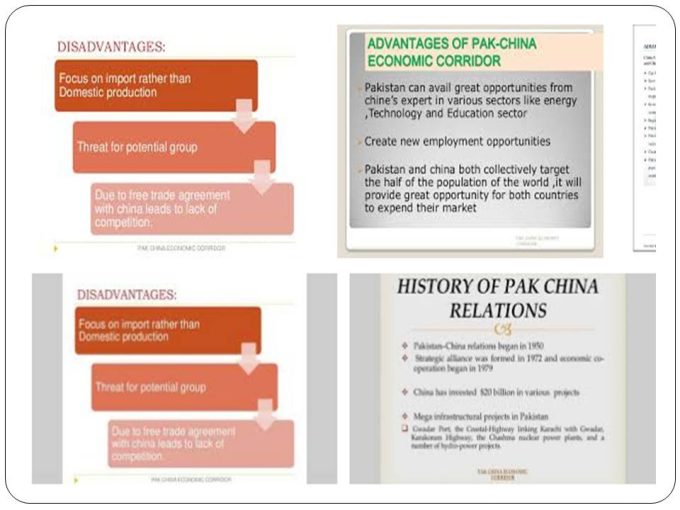China Pakistan Economic Corridor (CPEC) Analysis Advantages And Disadvantages
The Prime Minister of Pakistan is carefully evaluating the China-Pakistan Economic Corridor (CPEC) to avoid any mistakes. He has already conducted a detailed cost-benefit analysis of the project. The big question is whether CPEC will be successful. Here’s a breakdown:
Benefits of CPEC
- Economic Impact: CPEC is expected to be a major boost for both Pakistan and China. It will lead to more business and savings for both countries.
- Savings on Oil Costs: China currently spends $18 million daily on importing 6.3 million barrels of oil from the Middle East. With CPEC, these costs could be reduced to one-third, saving China $6 million daily and around $2 billion annually.
- Investment in Pakistan: China has promised to invest $46 billion in Pakistan through CPEC. Of this, $11 billion will be used for infrastructure projects, and $35 billion will go to energy projects.
Costs and Challenges
- Dependence on Infrastructure: If Pakistan fails to improve its infrastructure and trade industry, CPEC could turn into a project primarily benefiting Chinese businesses.
- Uncertain Investment: The current Chinese investment in Pakistan’s power sector isn’t very promising. Future private sector investment might increase as CPEC progresses.
- Trade Opportunities: If Pakistan doesn’t adopt a trade-focused economic vision, it might miss out on additional business opportunities from CPEC.
My View
It’s crucial for Pakistan’s planning and finance ministers to negotiate toll taxes on Chinese oil shipments and trade traffic. They should also ensure that infrastructure projects are beneficial for Pakistan. We need to recognize that China needs Pakistan as much as Pakistan needs China. Pakistan should seize this opportunity with a practical approach. It’s important for the federal government to communicate to Balochistan and KP that CPEC benefits the entire country, not just Punjab. The “P” in CPEC stands for Pakistan, not Punjab.




